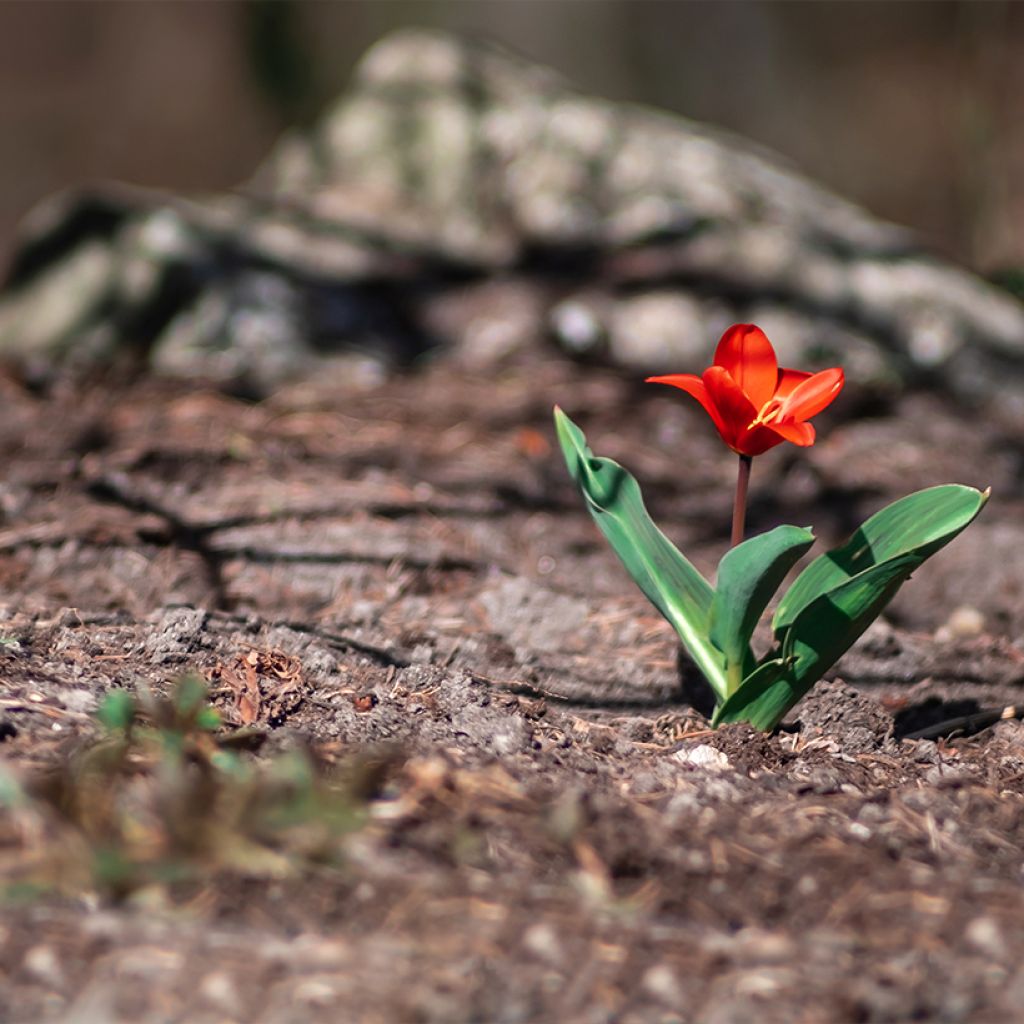

Tulipa kaufmanniana 'Show Winner'
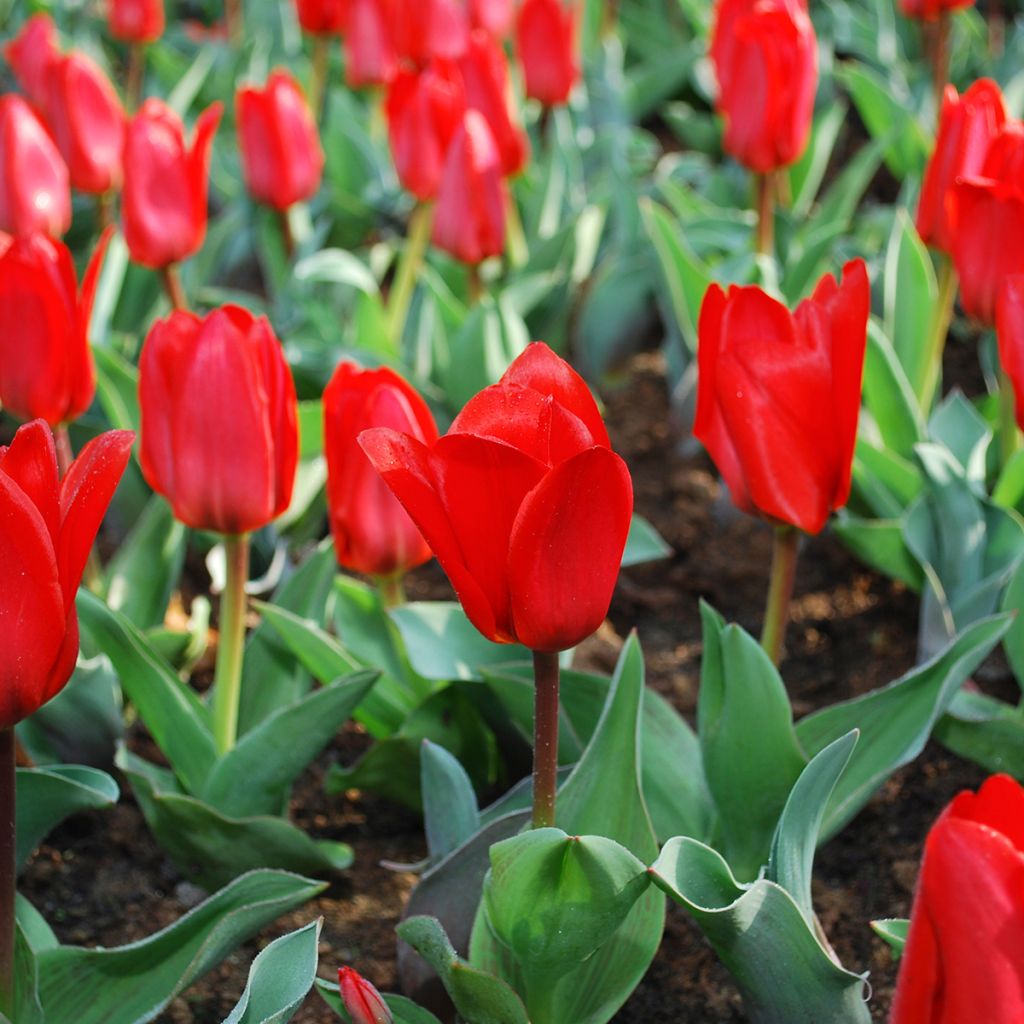

Tulipa kaufmanniana 'Show Winner'
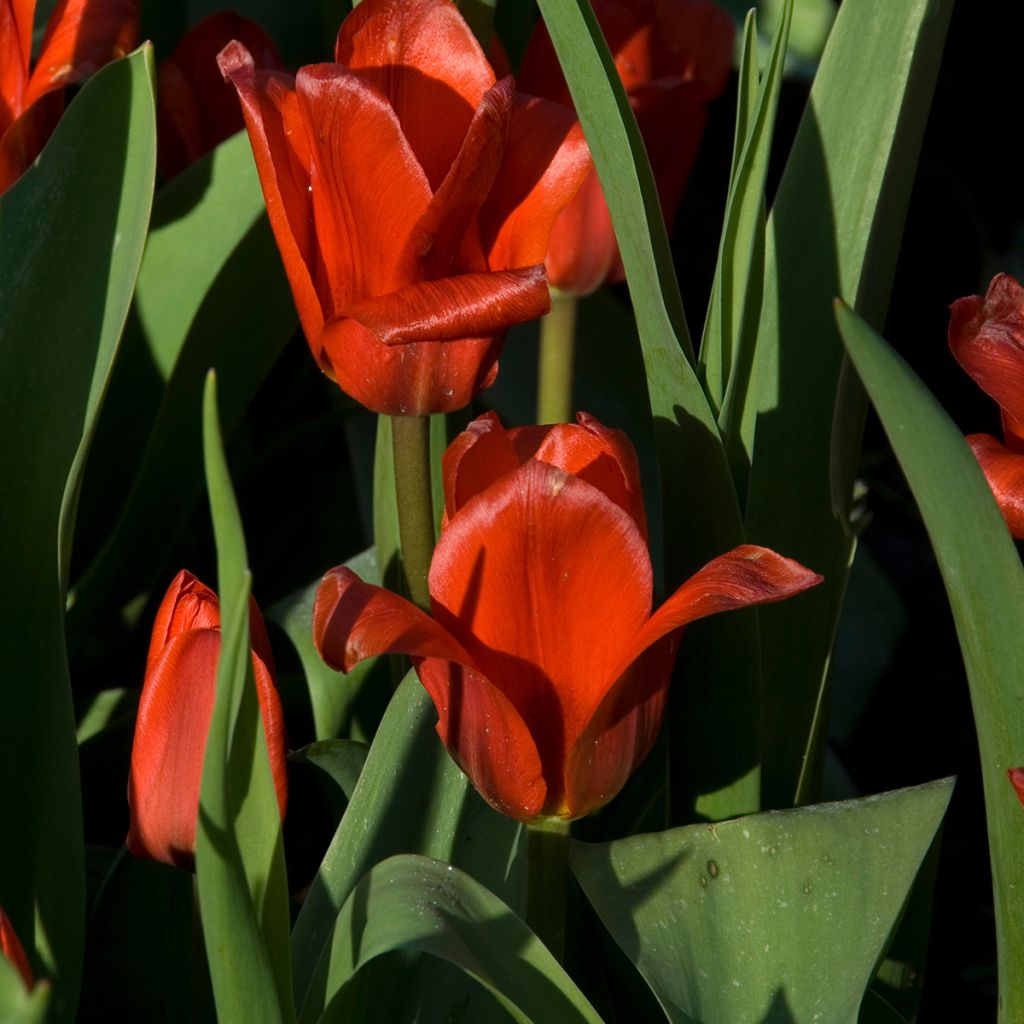

Tulipa kaufmanniana 'Show Winner'
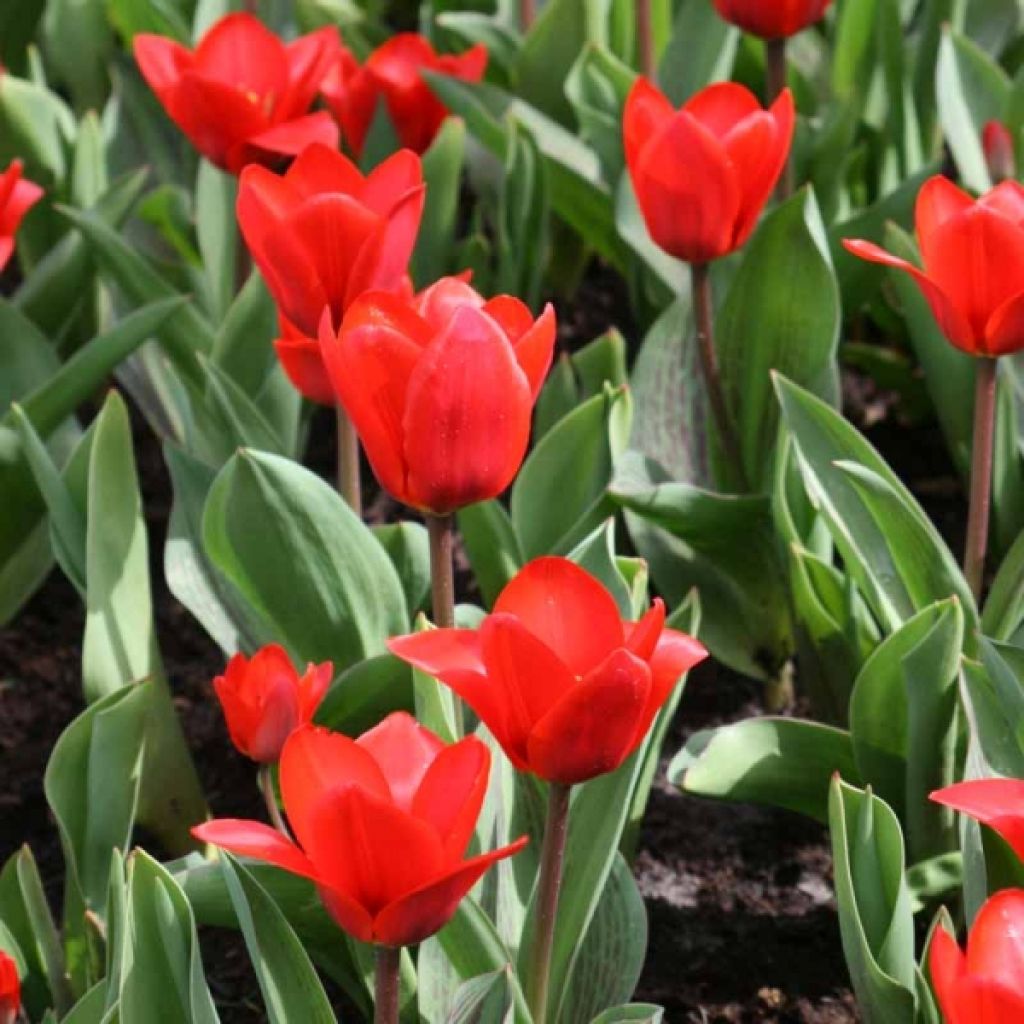

Tulipa kaufmanniana 'Show Winner'
Tulipa kaufmanniana 'Show Winner'
Tulipa kaufmanniana Showwinner
Kaufmann's tulip
This plant carries a 6 months recovery warranty
More information
We guarantee the quality of our plants for a full growing cycle, and will replace at our expense any plant that fails to recover under normal climatic and planting conditions.
From €5.90 for pickup delivery and €6.90 for home delivery
Express home delivery from €8.90.

Does this plant fit my garden?
Set up your Plantfit profile →
Description
The 'Show Winner' kaufmanniana Tulip, derived from the Kaufmann Tulip, also carries the lovely name of the water lily tulip, due to its corolla that unfolds like a water lily. This variety may be the brightest red-flowered botanical tulip currently available. Its flowers, which bloom early in the season, in scarlet red, radiate under the sun of early spring. While the beauty of the flower is first noticed, the foliage, marbled with purple like the greigii tulip, also catches attention. This hardy bulbous plant easily naturalizes in the garden and faithfully blooms year after year. Pair it with crocuses or botanical narcissi scattered randomly in your shrub and perennial beds.
Native to the mountains of Central Asia, the kaufmanniana Tulip or Kaufmann Tulip spreads in large carpets on the dry and rocky lawns of its native Turkestan. This species is the origin of numerous cultivars and hybrids with vibrant colours, including the 'Show Winner' variety, registered in 1966. Its bulb is round, covered with a brown tunic, and measures about 3cm (1in) in diameter. In spring, the plant forms a small clump composed of 2 to 5 lanceolate leaves, wide, 10 to 25cm (4 to 10in) long. The floral stem, 15 to 20cm (6 to 8in) tall, sometimes bears a red-pink bud as early as late January, which will release a flower in March with 6 satin petals, not pointed, but with rounded edges, 5 to 8cm (2 to 3in) in diameter. It opens widely in the sun, almost flat, in a hexagonal star centered on a yellow heart, and at that moment resembles more a water lily than a tulip. The corolla closes when the sun hides. The foliage yellows, then dries some time after flowering, while the bulb goes into dormancy. During this time of year, in summer, the soil can be dry without harm to the plant.
Kaufmann tulips are very hardy plants that easily naturalize in the garden when the required conditions are met. They prefer cold and humid winters and dry summers. They are planted in small groups in sunny rockeries or at the base of deciduous trees and shrubs with late foliage, such as deciduous Euonymus, or with light foliage like brooms, coronilla shrubs, or Kolkwitzia amabilis. 'Show Winner', with its brilliant flowering, pairs well with early white crocuses and narcissi, which bloom at around the same time, in March-April. You can also place it in pots on your terrace or balcony.
Report an error about the product description
Tulipa kaufmanniana 'Show Winner' in pictures


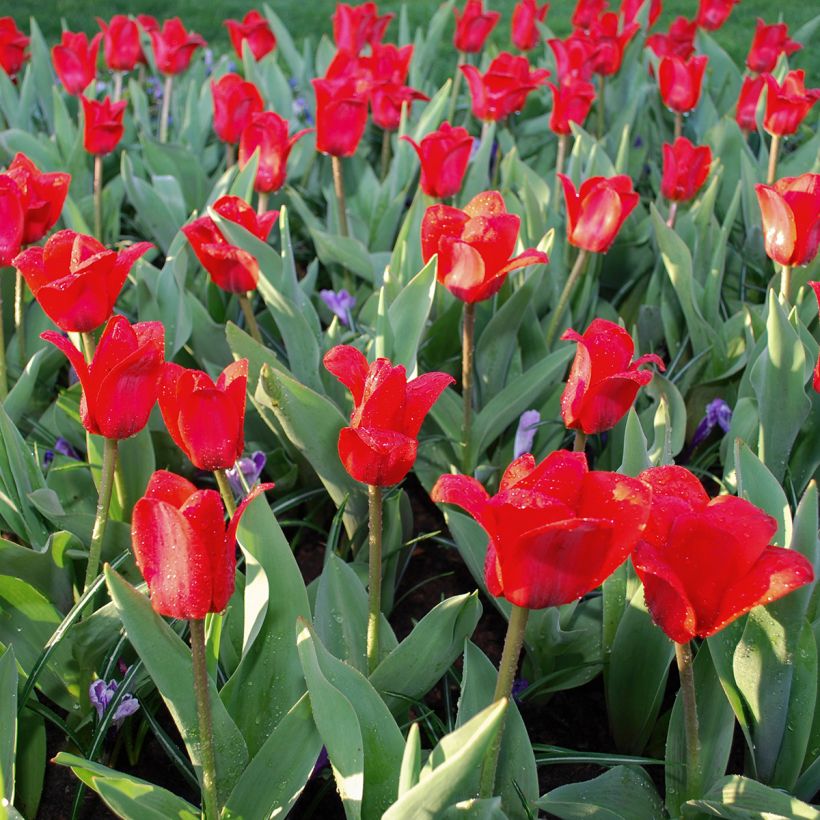

Plant habit
Flowering
Foliage
Botanical data
Tulipa
kaufmanniana
Showwinner
Liliaceae
Kaufmann's tulip
Cultivar or hybrid
Planting and care
Plant your Kaufmann tulips as soon as possible in a well-drained soil. Loosen the soil deeply. Plant them at a depth of 8cm (3in) (Bulbs should be covered with twice their height in soil). Space the bulbs a few cm apart, making sure they don't touch. Choose a sunny location for better flowering. After flowering, cut the flower stalks and let the leaves dry completely before cutting them. These botanical tulips are not afraid of dry summers, as their dormant bulb at this time of year does not tolerate excessive moisture, which can cause them to rot.
Advice: Flowering carpets You can create beautiful flower spaces around the house, in flowerbeds, around trees, or in wild areas. It is an economical and sustainable solution, provided you follow a few principles:
1) This is a planting that should be left in place.
2) Choose the varieties carefully according to the situation.
3) A period of rest is essential after flowering to allow the bulbs to replenish. Let the foliage turn yellow and dry before cutting it.
4) Organic fertilizer should be spread once a year in autumn.
Planting period
Intended location
Care
This item has not been reviewed yet - be the first to leave a review about it.
Haven't found what you were looking for?
Hardiness is the lowest winter temperature a plant can endure without suffering serious damage or even dying. However, hardiness is affected by location (a sheltered area, such as a patio), protection (winter cover) and soil type (hardiness is improved by well-drained soil).

Photo Sharing Terms & Conditions
In order to encourage gardeners to interact and share their experiences, Promesse de fleurs offers various media enabling content to be uploaded onto its Site - in particular via the ‘Photo sharing’ module.
The User agrees to refrain from:
- Posting any content that is illegal, prejudicial, insulting, racist, inciteful to hatred, revisionist, contrary to public decency, that infringes on privacy or on the privacy rights of third parties, in particular the publicity rights of persons and goods, intellectual property rights, or the right to privacy.
- Submitting content on behalf of a third party;
- Impersonate the identity of a third party and/or publish any personal information about a third party;
In general, the User undertakes to refrain from any unethical behaviour.
All Content (in particular text, comments, files, images, photos, videos, creative works, etc.), which may be subject to property or intellectual property rights, image or other private rights, shall remain the property of the User, subject to the limited rights granted by the terms of the licence granted by Promesse de fleurs as stated below. Users are at liberty to publish or not to publish such Content on the Site, notably via the ‘Photo Sharing’ facility, and accept that this Content shall be made public and freely accessible, notably on the Internet.
Users further acknowledge, undertake to have ,and guarantee that they hold all necessary rights and permissions to publish such material on the Site, in particular with regard to the legislation in force pertaining to any privacy, property, intellectual property, image, or contractual rights, or rights of any other nature. By publishing such Content on the Site, Users acknowledge accepting full liability as publishers of the Content within the meaning of the law, and grant Promesse de fleurs, free of charge, an inclusive, worldwide licence for the said Content for the entire duration of its publication, including all reproduction, representation, up/downloading, displaying, performing, transmission, and storage rights.
Users also grant permission for their name to be linked to the Content and accept that this link may not always be made available.
By engaging in posting material, Users consent to their Content becoming automatically accessible on the Internet, in particular on other sites and/or blogs and/or web pages of the Promesse de fleurs site, including in particular social pages and the Promesse de fleurs catalogue.
Users may secure the removal of entrusted content free of charge by issuing a simple request via our contact form.
The flowering period indicated on our website applies to countries and regions located in USDA zone 8 (France, the United Kingdom, Ireland, the Netherlands, etc.)
It will vary according to where you live:
- In zones 9 to 10 (Italy, Spain, Greece, etc.), flowering will occur about 2 to 4 weeks earlier.
- In zones 6 to 7 (Germany, Poland, Slovenia, and lower mountainous regions), flowering will be delayed by 2 to 3 weeks.
- In zone 5 (Central Europe, Scandinavia), blooming will be delayed by 3 to 5 weeks.
In temperate climates, pruning of spring-flowering shrubs (forsythia, spireas, etc.) should be done just after flowering.
Pruning of summer-flowering shrubs (Indian Lilac, Perovskia, etc.) can be done in winter or spring.
In cold regions as well as with frost-sensitive plants, avoid pruning too early when severe frosts may still occur.
The planting period indicated on our website applies to countries and regions located in USDA zone 8 (France, United Kingdom, Ireland, Netherlands).
It will vary according to where you live:
- In Mediterranean zones (Marseille, Madrid, Milan, etc.), autumn and winter are the best planting periods.
- In continental zones (Strasbourg, Munich, Vienna, etc.), delay planting by 2 to 3 weeks in spring and bring it forward by 2 to 4 weeks in autumn.
- In mountainous regions (the Alps, Pyrenees, Carpathians, etc.), it is best to plant in late spring (May-June) or late summer (August-September).
The harvesting period indicated on our website applies to countries and regions in USDA zone 8 (France, England, Ireland, the Netherlands).
In colder areas (Scandinavia, Poland, Austria...) fruit and vegetable harvests are likely to be delayed by 3-4 weeks.
In warmer areas (Italy, Spain, Greece, etc.), harvesting will probably take place earlier, depending on weather conditions.
The sowing periods indicated on our website apply to countries and regions within USDA Zone 8 (France, UK, Ireland, Netherlands).
In colder areas (Scandinavia, Poland, Austria...), delay any outdoor sowing by 3-4 weeks, or sow under glass.
In warmer climes (Italy, Spain, Greece, etc.), bring outdoor sowing forward by a few weeks.


































